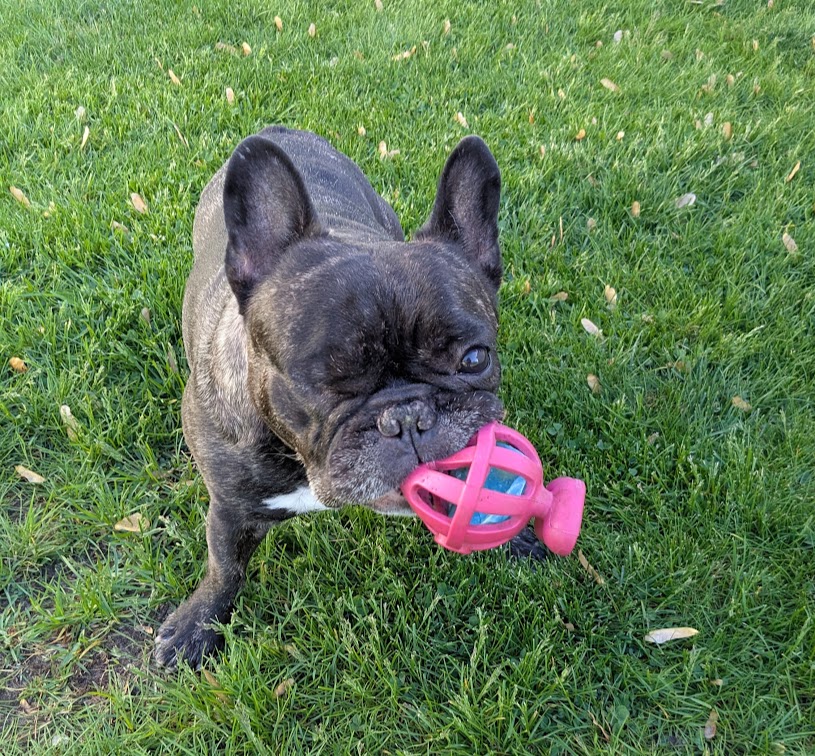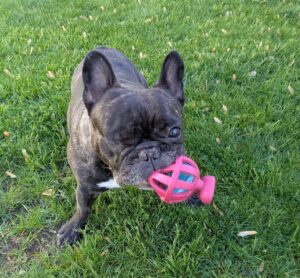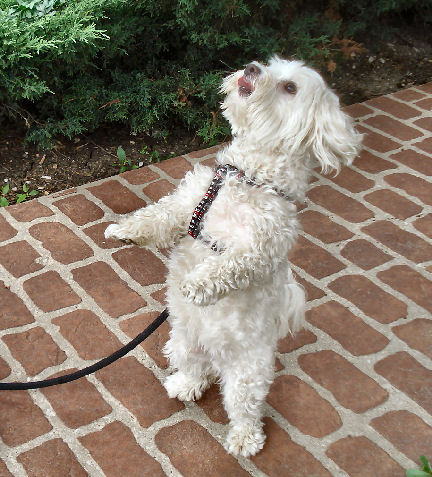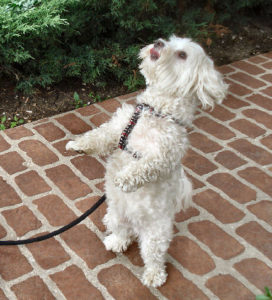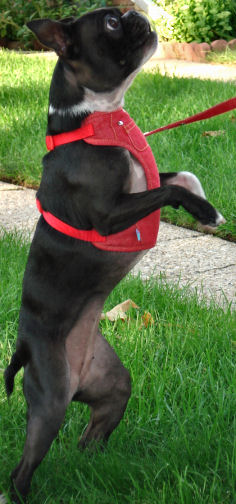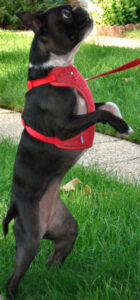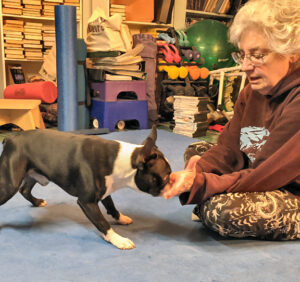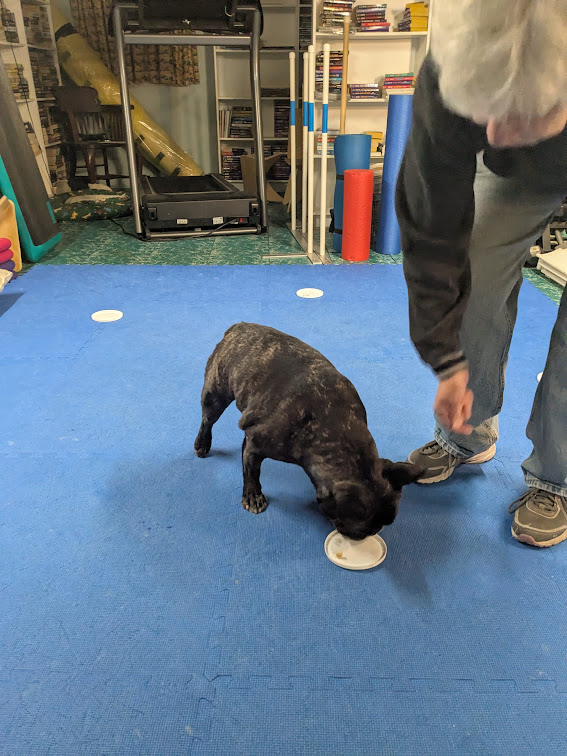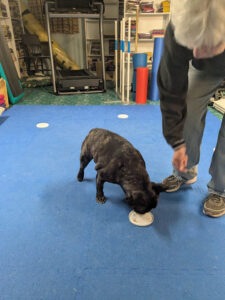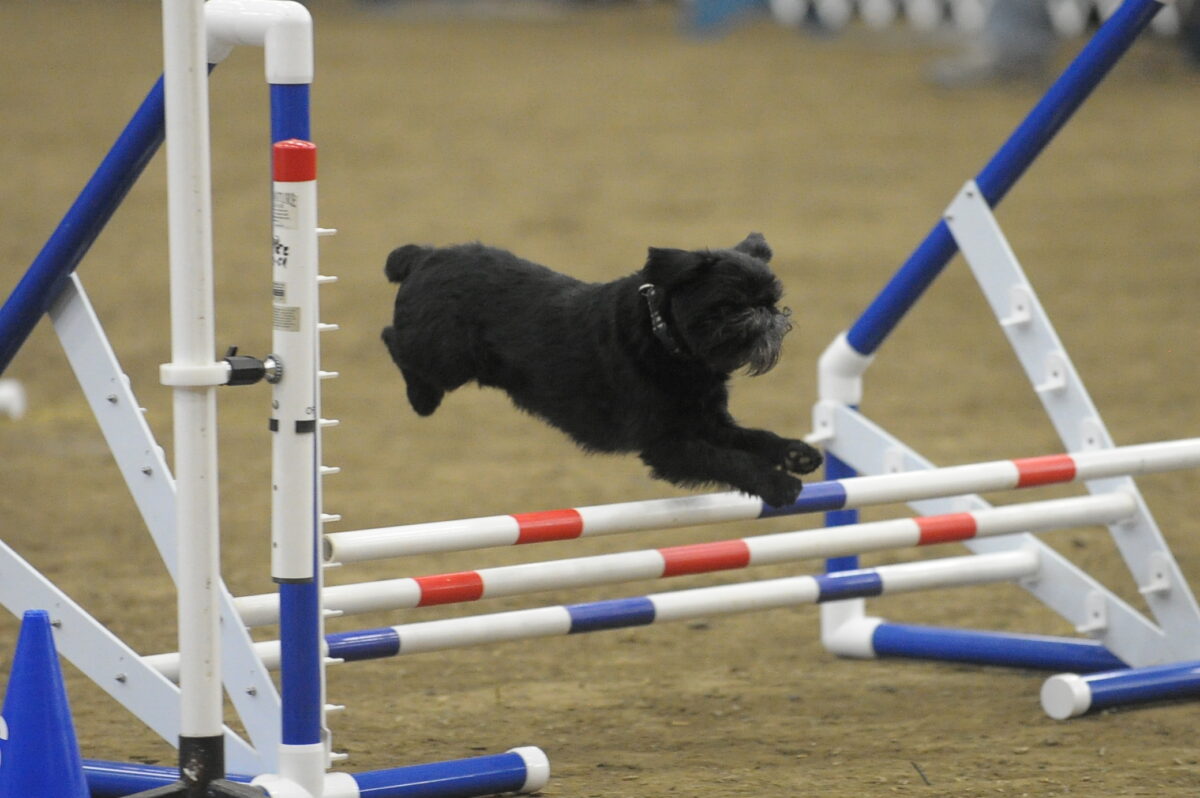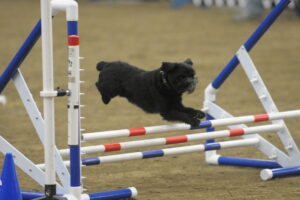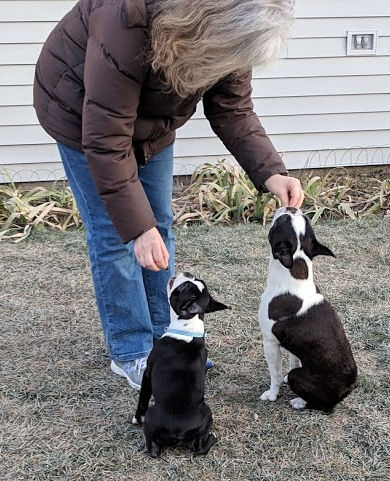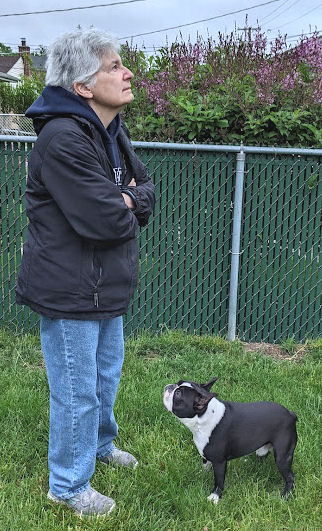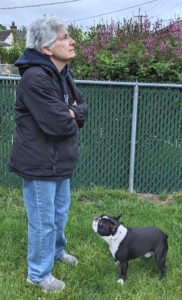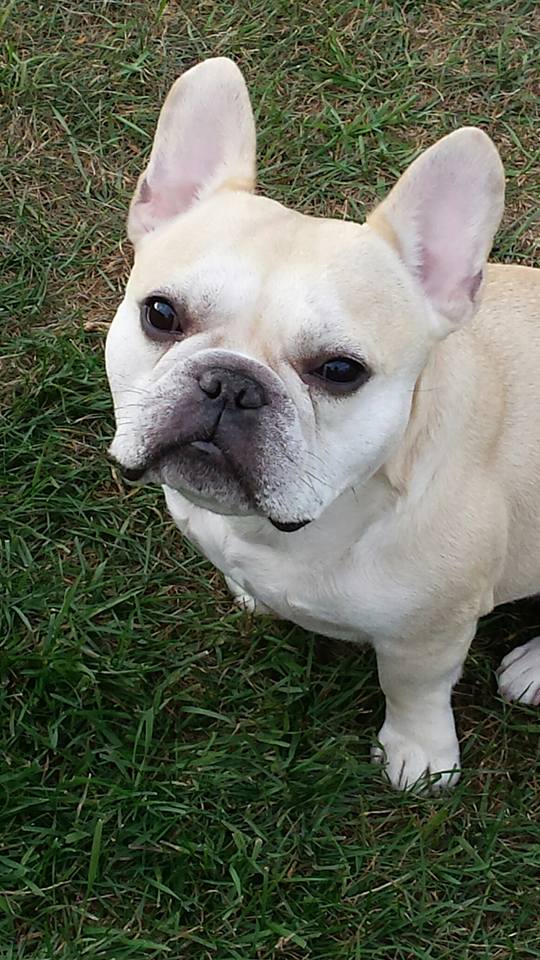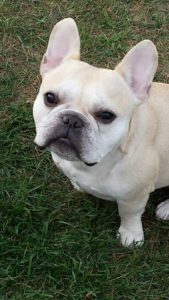What’s your absolute favorite thing about doing puzzles? It’s figuring them out for yourself. It’s not as much fun if somebody helps you, or gives you a hint.
Your dog is going to love learning movement puzzles. They’ll look forward to playing every time. Your dog will love seeing what new twists you add to their puzzles.
But it’s going to be hard on you. Probably more difficult than any other training game you’ve played with your dog. Because you’re not allowed to help.
Simple setup
There are basically two main variations of the Movement Puzzle. This week we’ll introduce the more static version. You get to sit for this one.
This thinking game / movement puzzle is called “Vito’s Game.” We were introduced to it in a video by the great dog trainer Susan Garrett of “Say Yes!” Dog training.
You need two bowls for treats, lots of treats, and an obstacle for your dog to go around. It can be anything. We generally use a five-gallon bucket or a wastebasket.
Sit on the floor with your legs crossed. Have one empty bowl at each side, near your hips. Hold the treats between your legs.
Start playing side to side
Get your dog’s attention and gently toss a treat off to your right. Then toss one to your left. This will implant the idea of going side to side in your dog’s mind. Do it a couple more times, alternating sides, and make your toss a little closer each time. For the last introductory part, drop a treat in one of the bowls at your side. Then, after your dog’s gotten that treat, drop one in the bowl on the other side.
Now’s the time to start using the bucket. Put it right up against your shins so your dog has to go around it to get to your other side. Now wait. (It’s hard, but you’ve got this.)
If your dog goes right to one of the bowls, drop a treat in it. Wait for them to go around the bucket to the other side. You can look at the empty bowl, but you can’t say anything, or tap the bowl, or give any other cue. It’s up to your dog to go around and check the other bowl. As soon as they do, drop a treat in.
When your dog is fairly reliably going side-to-side to get the treats from the bowls by your sides, start gradually moving the bucket away from you. Your dog still has to circle around the bucket, side to side, to get the treats.
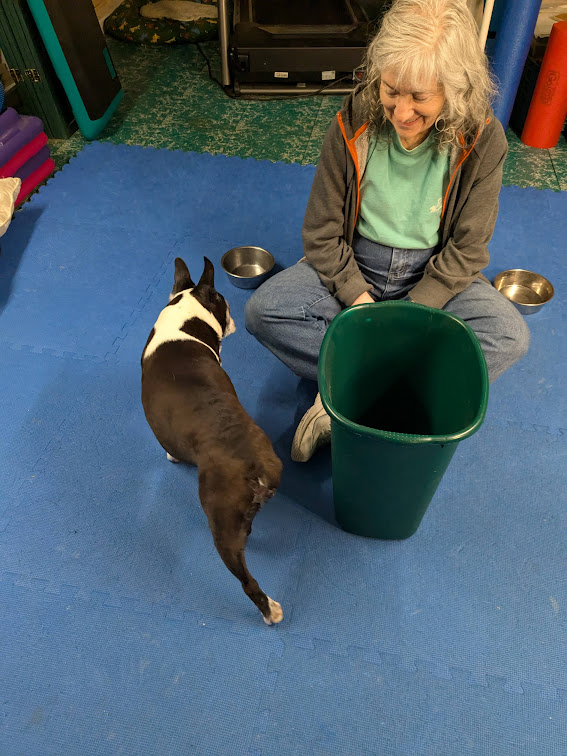
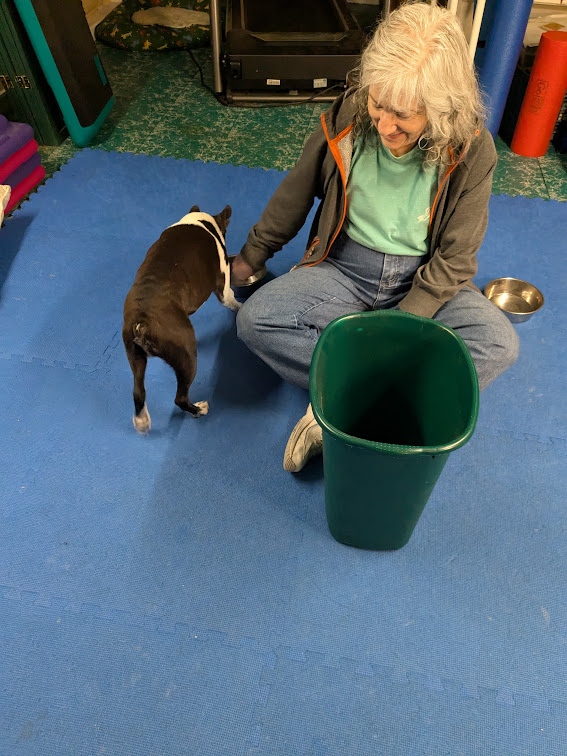
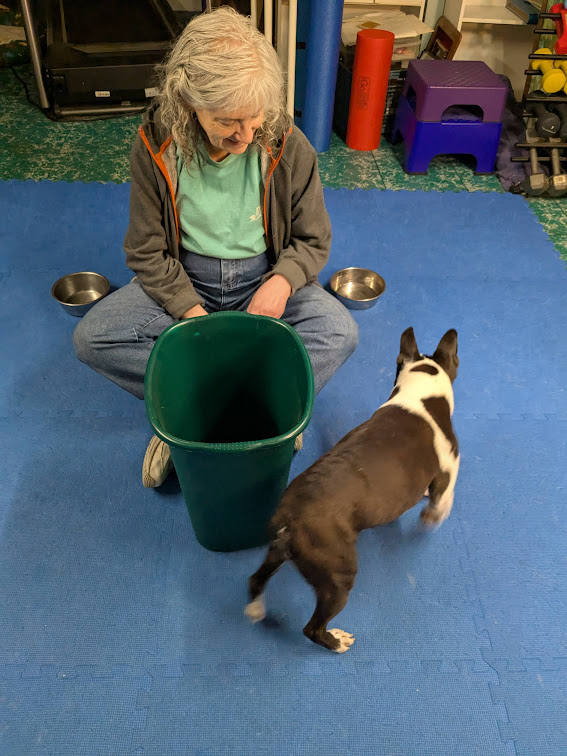
If your dog takes a shortcut and tries to get to the other side by taking a path between you and the bucket, don’t say anything. Just move the bucket closer and start again.
Think about it
Vito’s Game is a puzzle your dog has to solve. It’s a thinking game, something most people don’t normally expect, or require from their dogs. But good training encourages dogs to make good decisions. The dog has to figure out what they have to do to get the treats.
You may have to start from scratch the first few times you play Vito’s game. That’s okay. Your dog will get it. As long as you do your part.
Your job is to deliver treats to the bowls. That’s it. For the game to be effective, you can’t cheat. No hints, no cues, no talking, no tapping treats on the bowls, no telling your dog what to do. Let your dog find the joy in solving the puzzle.

